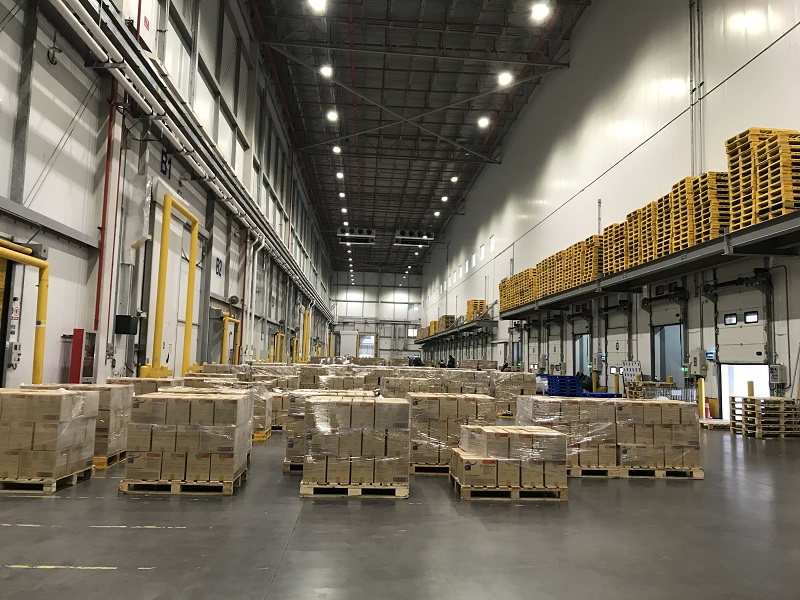
Guangzhou, a bustling hub in Southern China, is not just a center for trade and innovation—it also plays a crucial role in global food supply chains. From fresh seafood to tropical fruits and frozen meats, food imports from Guangzhou are booming. What ensures the quality, safety, and shelf life of these perishable products? The answer lies in the city’s cold chain logistics infrastructure, a backbone of modern food trade.
In this blog, we dive into the intricate systems, technologies, and strategies powering cold chain logistics for food imports from Guangzhou and how businesses around the world can benefit from this robust supply chain.
1. What Is Cold Chain Logistics?
Cold chain logistics refers to the temperature-controlled supply chain essential for the transportation of perishable goods. This includes not only refrigerated transport, but also cold storage, packaging, handling, and monitoring. The primary goal? Maintaining a consistent temperature range to preserve product quality from origin to destination.
📌 Learn more about cold chain logistics:
https://www.investopedia.com/terms/c/cold-chain.asp
2. Why Guangzhou Is a Cold Chain Powerhouse
Guangzhou’s strategic location near Shenzhen, Hong Kong, and the Pearl River Delta makes it a vital gateway for global exports and imports. The city’s cold chain capacity has seen dramatic investment over the past decade, thanks to:
-
- Proximity to manufacturing and agricultural zones
-
- Modern logistics parks and cold storage facilities
-
- Access to international shipping ports and airports
-
- Government support for food safety and traceability
According to the Guangdong Provincial Department of Commerce, the regional government continues to prioritize modern cold chain infrastructure as part of its five-year development plan for logistics and trade modernization.
3. Key Components of Guangzhou’s Cold Chain Infrastructure
❄️ 1. Cold Storage Warehouses
Cold warehouses in Guangzhou are strategically located near key transport hubs such as Guangzhou Baiyun International Airport and Nansha Port, providing quick access to cargo routes. These facilities include:
-
- Multi-temperature zones (chilled, frozen, deep freeze)
-
- Automated racking systems
-
- 24/7 monitoring and alert systems
🌐 Example: SF Express Cold Chain Storage
🚛 2. Refrigerated Transport Fleets
Temperature-controlled trucks and containers ensure food stays within optimal conditions during transport. These vehicles are equipped with:
-
- GPS tracking
-
- Real-time temperature monitoring
-
- Insulated multi-compartment trailers
Many logistics providers in Guangzhou also offer cross-border cold chain services, allowing fresh products to reach Southeast Asia and beyond within 24–72 hours.
📡 3. IoT & Blockchain Integration
To enhance transparency and traceability, Guangzhou-based logistics providers are increasingly integrating IoT sensors and blockchain into cold chain operations. These technologies help:
-
- Monitor temperature deviations
-
- Log every handoff point
-
- Ensure compliance with food safety regulations
🔗 More on blockchain in logistics:
https://www.ibm.com/topics/blockchain-supply-chain
4. Most Imported Food Categories via Guangzhou Cold Chain
Guangzhou serves as a key import point for:
-
- Seafood (e.g., salmon from Norway, lobsters from Canada)
-
- Tropical fruits (e.g., durian from Thailand, mangosteen from Malaysia)
-
- Meats (e.g., beef from Australia, pork from Europe)
-
- Dairy and frozen products
These imports are mostly processed through Nansha Port, where specialized cold chain docks streamline unloading and customs procedures.
5. Challenges in Cold Chain Logistics for Imports
Despite advances, challenges remain:
-
- Temperature deviations due to power outages or delays
-
- Lack of skilled cold chain professionals
-
- Complex customs procedures for food safety inspections
-
- High operating costs and energy usage
Businesses must partner with experienced agents in Guangzhou who understand end-to-end cold chain operations and can provide contingency planning.
6. How to Work with a Cold Chain Logistics Agent in Guangzhou
Choosing the right logistics or sourcing agent is essential. Key traits to look for include:
-
- Proven experience in handling cold chain imports
-
- Strong relationships with Guangzhou customs and quarantine authorities
-
- Access to certified refrigerated transport and warehouses
-
- Capability to handle documentation, labeling, and inspections
🌐 Connect with reliable sourcing experts:
https://guangzhou-agent.com
(Specializing in Guangzhou-based logistics, sourcing, and import-export services.)
7. Future of Cold Chain Logistics in Guangzhou
As global demand for fresh and frozen foods increases, Guangzhou is scaling up its cold chain capabilities. Some trends to watch:
-
- Smart warehouses powered by AI and robotics
-
- Sustainable refrigeration systems to reduce emissions
-
- Regional integration with the Greater Bay Area for rapid distribution
-
- Digital twin technology for real-time supply chain modeling
These developments will enhance the efficiency, resilience, and scalability of food logistics operations in the region.
Conclusion
Cold chain logistics is the invisible engine behind Guangzhou’s booming food import industry. From tech-driven temperature controls to vast refrigerated storage facilities, this infrastructure ensures that perishable goods maintain their integrity as they travel across continents.
Whether you’re an importer of tropical fruits or frozen seafood, Guangzhou offers a strategic advantage—but only if you have the right logistics partners on the ground. By understanding how the system works and tapping into local expertise, your business can thrive in the complex world of international food trade.
📞 Need cold chain solutions in Guangzhou?
Visit https://guangzhou-agent.com to find trusted agents and logistics services tailored to your import needs.


